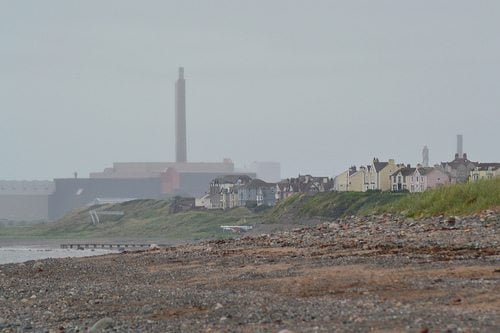

Environment
Britain’s nuclear waste site almost certain to leak
The Environment Agency has admitted that it was a mistake to build the UK’s nuclear waste dump on its current location on the West Cumbrian coast, warning it is almost certain to leak contaminated waste within “a few hundred to a few thousand years”.
According to an internal document published in January and recently obtained by the Guardian, erosion from storms and rising sea levels caused by climate change will almost certainly cause the Low Level Waste Repository (LLWR) to leak and contaminate the Cumbrian coast with radioactive waste.
“It is doubtful whether the location of the LLWR site would be chosen for a new facility for near-surface radioactive waste disposal if the choice were being made now,” the document says.
It raises concern that radioactive items, ranging from tiny particles to contaminated objects formerly used at Britain’s nuclear sites, could end up on the beach.
Commenting on the risks earlier in the year, Dr David Lowry of the Department of Energy’s Geological Disposal Implementation Board for Radioactive Waste, said, “One of the certainties of climate change is that the sea level will rise – therefore, developing a huge nuclear waste storage site on the coastline is a problem for future generations.”
The LLWR began operating in 1959, and now covers about 110 hectares, at between five and 20 metres above sea level.
It stores waste from the nearby Sellafield nuclear site as well as sources such as other nuclear power stations, hospitals, and MoD sites.
In the wake of the stormy weather that brought coastal flooding to much of the UK over the winter period, the Environment Agency urged the private sector operators of the LLWR to look into the long-term need for improved flood defences.
Despite this, agency officials are also currently considering proposals to expand the site further.
LLW Repository Ltd argues that the risks are small. The operators say that new restrictions on the waste brought to the site mean that doses will be very small by the time any leakage occurs.
However, Martin Forward of Cumbrians Opposed to a Radioactive Environment, told the Guardian, “The potent threat of rising sea levels makes the future use of the site unsustainable, unethical and highly dangerous for future generations.”
Photo: Ashley Coates via flickr
Further reading:
Radioactivity fears at Sellafield nuclear site quashed after evacuation
Sellafield site ‘unsafe for future nuclear storage’
Campaigners celebrate victory as Cumbria votes against nuclear waste site
UK to build first nuclear plant in a generation, as Hinkley C is given go-ahead


 Environment10 months ago
Environment10 months agoAre Polymer Banknotes: an Eco-Friendly Trend or a Groundswell?

 Environment11 months ago
Environment11 months agoEco-Friendly Home Improvements: Top 7 Upgrades for 2025

 Features9 months ago
Features9 months agoEco-Friendly Cryptocurrencies: Sustainable Investment Choices

 Features10 months ago
Features10 months agoEco-Friendly Crypto Traders Must Find the Right Exchange





























